Festival book illustrations
The work of artists did not end with the festival. They were often needed to contribute to the official record that was intended to impress a wider community. The visual material, in particular, could be of rare quality. In 1633, for instance, when the Chancellor of Poland – Jerzy Ossolinski – visited the Pope, Stefano della Bella wrought an intricate engraving, filling the space with an astonishing number of figures, suggesting the landscape behind and indicating something of the moumentality of Rome with the stone monument carved on the left.
The Stefano della Bella engraving is shown in Illustration 13 with its elaborate design and multiple figures.
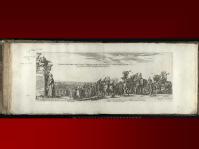
Illustration 13
Look also at this scene, by an unknown artist (Illustration 14) which shows a fortress at the centre with squadrons of riders drawn up ready to perform while some others are engaged in action. The tiny figures and their movements have been clearly captured by the artist’s pen.
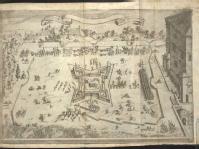
Illustration 14
Some of the most remarkable drawings in a Festival book are those created by Jacques Callot where he strove to capture not only the detail of the figures, but also to give life to the simulacra of their action. His book related the tournament and horse ballet devised in February 1616 to entertain the court at Florence. In a succession of sketches interwoven between prose descriptions of the activities, Callot renders minutely the forward movement of Lucinda’s triumphal chariot drawing in the margin, in slightly larger form, the figure of one of her attendants.
The attendant is shown in Illustration 15.
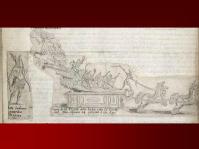
Illustration 15
Illustration 16 shows the chariot of the pageant figure Africa, characterised by activity similar to that of the chariot of Lucinda.
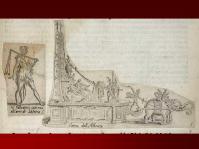
Illustration 16
Following these, you can see the first of a series of sixteen engravings giving aerial views of the horse ballet. On the first page, the initial positions of the knights are illustrated.
In this second illustration (Illustration 17) you can observe how radically the movement changes within a short space of time.
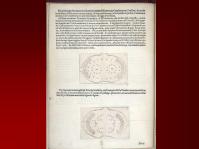
Illustration 17
These engravings give an idea of the intricate nature of horse and rider. it is not surprising that such horse ballets took months to prepare and demonstrated the skills both of the knights and their mounts.
